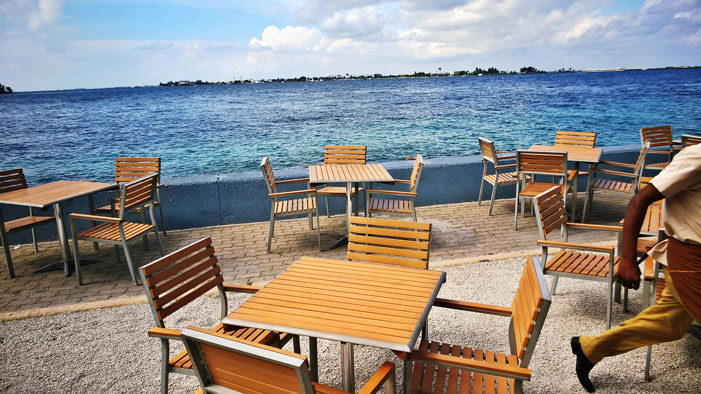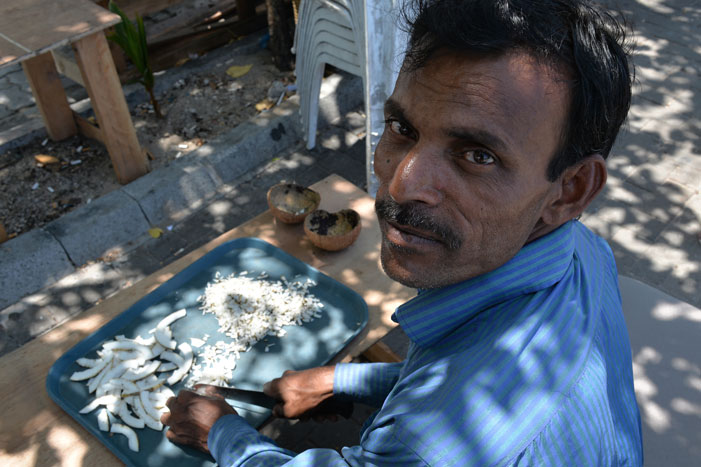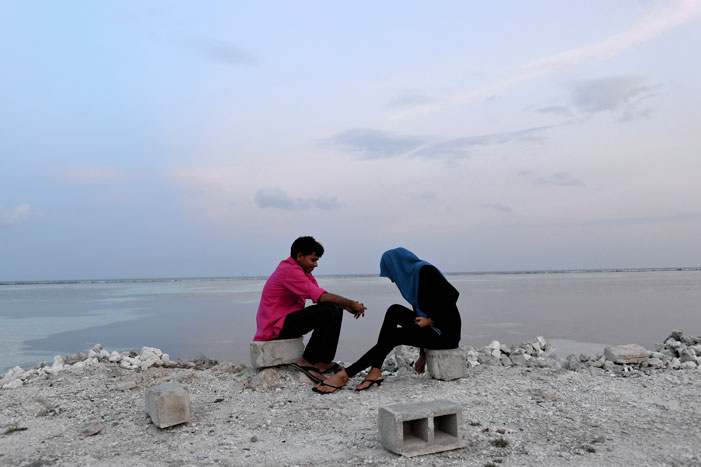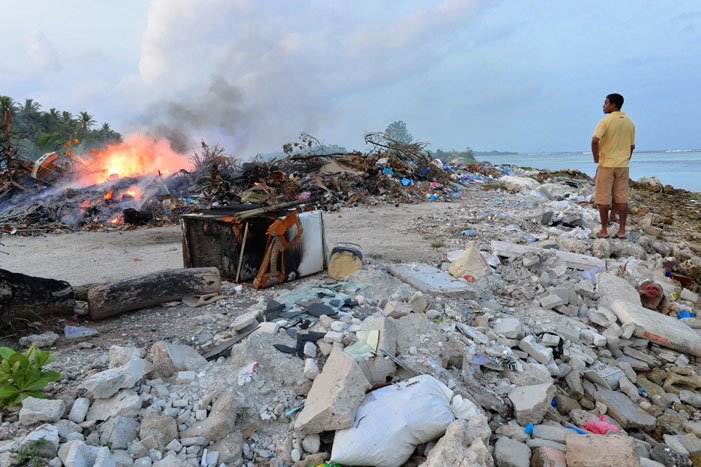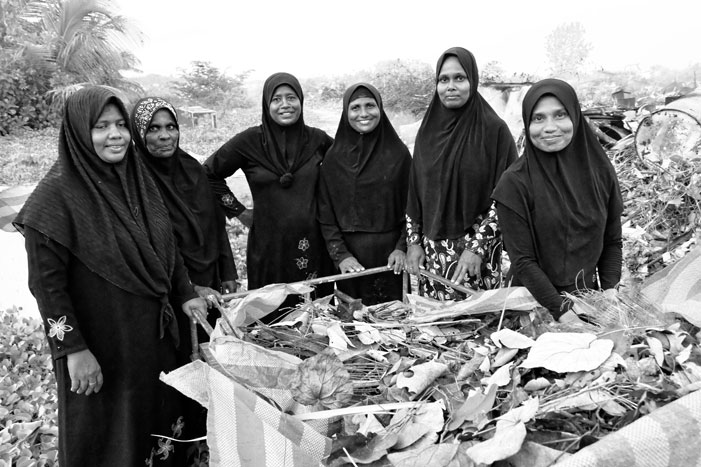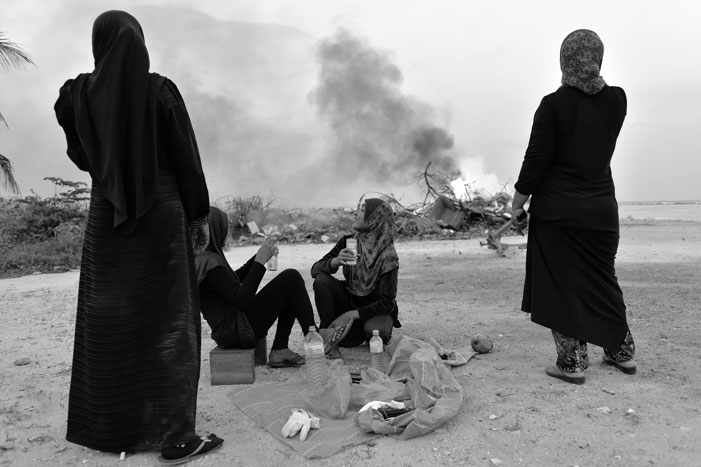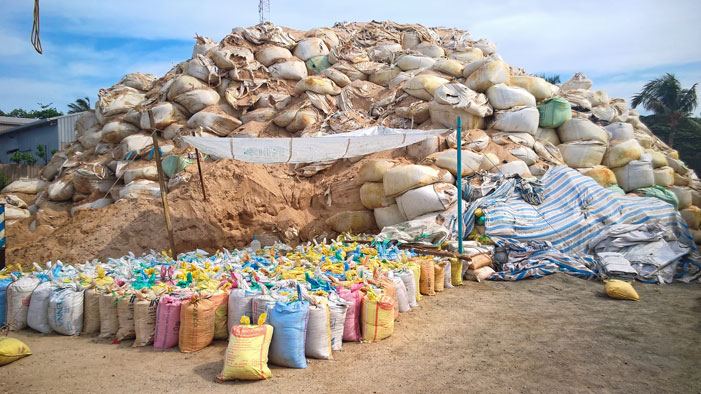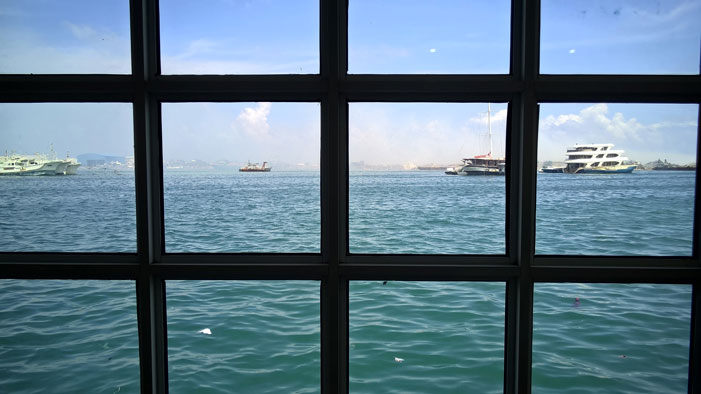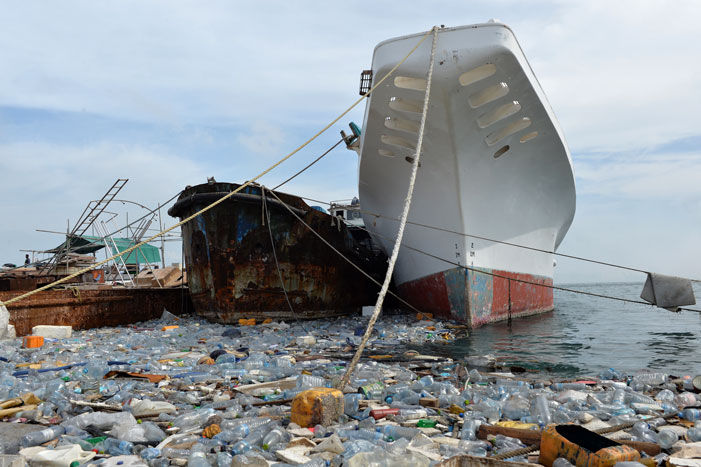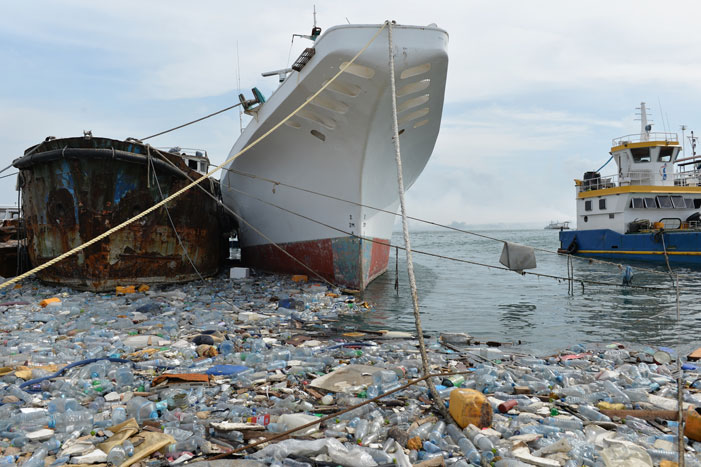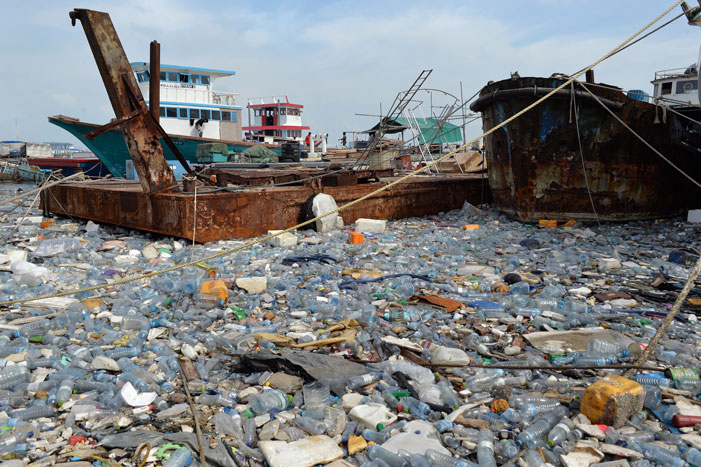It was one of those moments I wished for an even wider lens. 28mm were just too narrow. Trying to capture the scope of environmental disaster in the pristine Maldives would even ask for panorama format. Alas, the 28mm had to do to document the poisoning of the Maldives’ unique coral world. I’m talking about Tilafushi, an island a half an hour boat ride away from the capital Malé. Locals call it “garbage island.” Huge piles of smoke rise from the garbage deposits. That’s right. The Maldives, home to some of the world’s most unique and expensive hotels, know no proper waste management. Islanders burn plastic, rubbish and everything else near a beach on their islands, and the capital Malé and fancy resorts ship all their rubbish to Tilafushi where lead and many other toxins trickle into the soft sea ground or are dispersed all over the place by thick fumes carried away by wind.
Don’t get me wrong. Most if not all visitors never heard of Tilafushi and have no clue what happens to the rubbish they leave behind in their luxury refuges. Even though one can see the thick plumes of smoke from Malé, the Maldives are spread over a vast area and most tourists don’t even set foot in the capital. The international airport is located on an island just off Malé from where guests are transported by speed boat or connecting flight directly to their paradise resorts.
Here’s just a small selection of photos, some better, some worse, without the “worst” ones. Kind of shameful that high-end luxury resorts advertise environmentally friendly and conscious retreats while probably only a tiny little handful of them disposes properly of waste.
And yes, overall the Maldives are still a pristine paradise with crystal clear, turquoise seas and and abundance of marine life. Question is, for how much longer?
